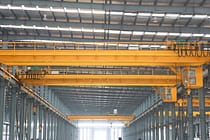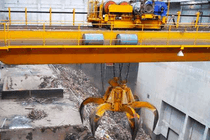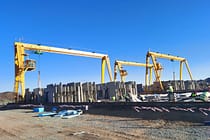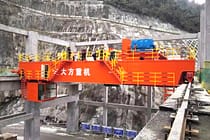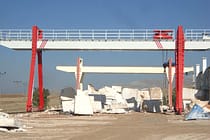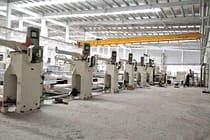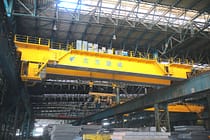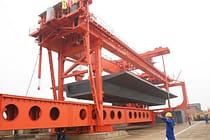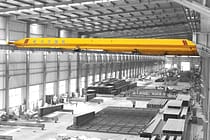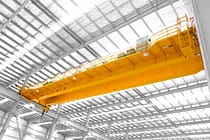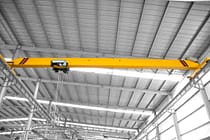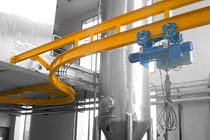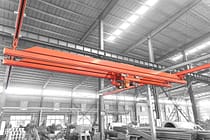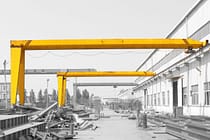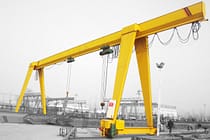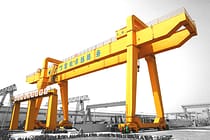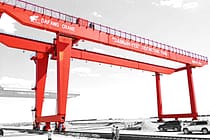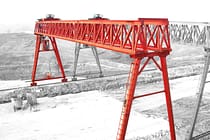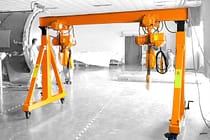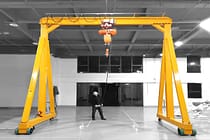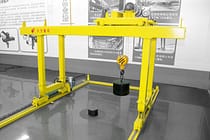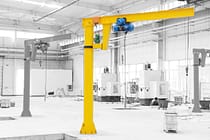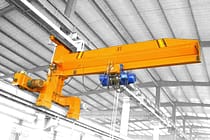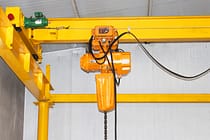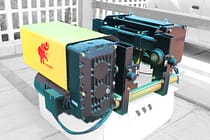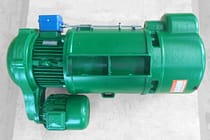Gantry Crane Inspection Checklist for Safety and Performance
Table of Contents
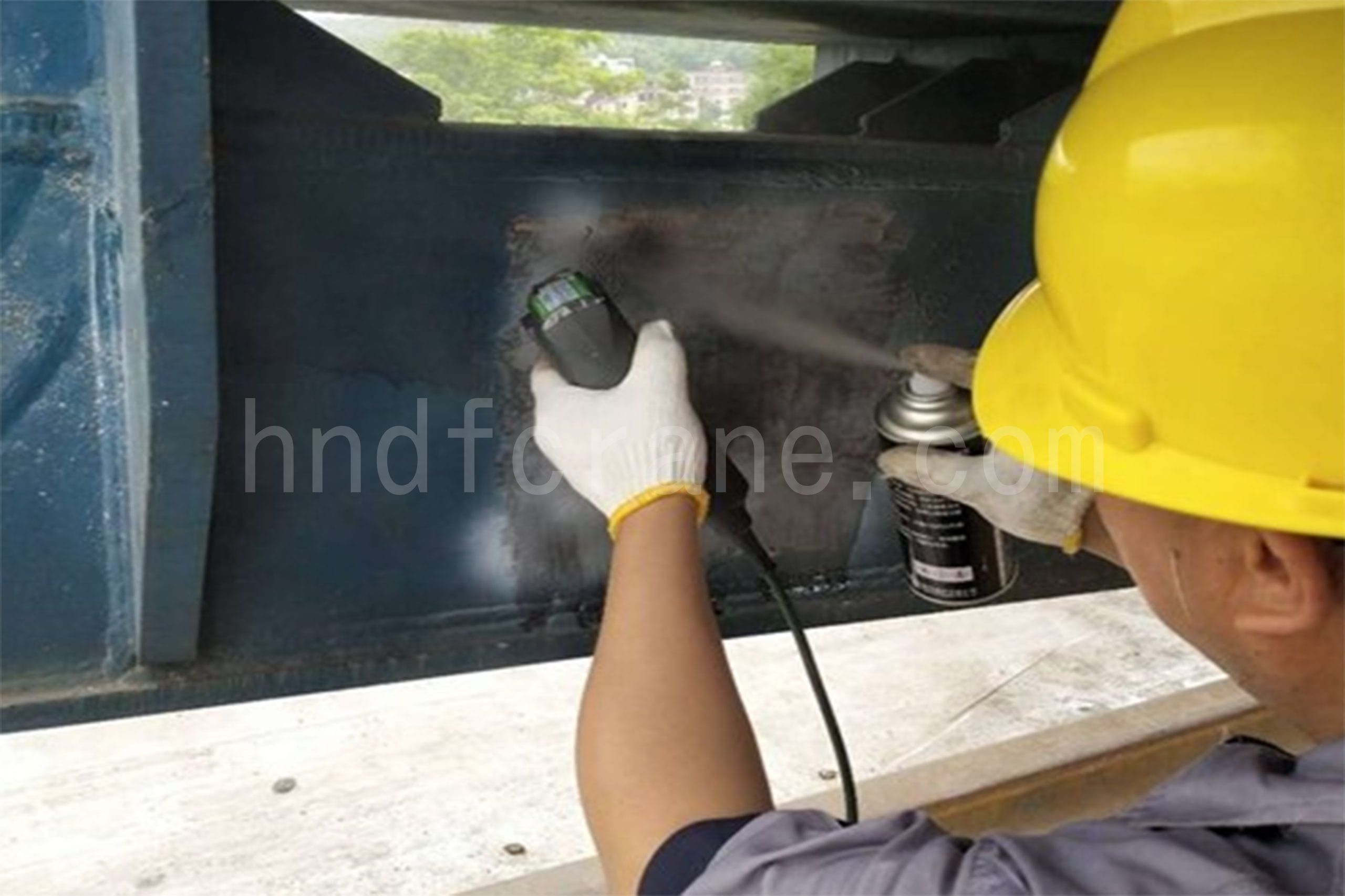
Gantry cranes can greatly reduce staff labor intensity, but various safety accidents have occurred repeatedly due to personnel negligence during use and installation. Establishing a sound safety supervision system is essential to ensure that the working status of active gantry cranes complies with national standards and regulations. Regular gantry crane inspection plays a key role in identifying potential risks and improving personnel awareness of safe operation.
According to analysis of past accidents, the causes can be classified into three main categories: illegal operations by installation and operation personnel, design and manufacturing defects, and weaknesses in safety management systems. Among these, accidents resulting from personnel’s illegal operations account for as much as 75%. During gantry crane inspection, differing interpretations of standards among inspectors have, to some extent, led to missed inspection items or excessively strict evaluations.
The primary goal of this article is to support inspection professionals in improving the overall quality of inspections and ensuring the safety of relevant personnel. Starting from the practical application of equipment testing, this study systematically explores the inspection and testing technologies related to gantry cranes. It evaluates the safety status of gantry cranes used in municipal construction, summarizes identified issues, analyzes potential hazards, and proposes a scientific and practical approach to gantry crane inspection and testing.
Gantry Crane Inspection Technical Information
During the gantry crane inspection, it was found that the nameplates of components such as the operating mechanism and lifting mechanism on some gantry cranes were inconsistent with the crane's original factory date. Additionally, there were no corresponding maintenance or replacement records. These discrepancies raised suspicions of unauthorized modifications, such as deck replacement and tampering with the gantry crane's factory date.
As part of the gantry crane inspection, the equipment's documentation—ensuring one file per machine—should be carefully reviewed. The type test report for the equipment should follow the principle of downward coverage for the main parameters of the gantry crane to meet the requirements of the manufacturing license.
In the gantry crane inspection process, inspectors should verify whether the factory dates on the nameplates of key components—such as the hoisting mechanism motor, electrical cabinet, and the motors for the long and cross-travel mechanisms—are consistent with that of the entire crane. If any components have been replaced or maintained, corresponding maintenance and operation records must be checked to ensure traceability and compliance.
Gantry Crane Inspection Operating Environment and Appearance
- In the process of inspecting crane equipment, it should be checked whether the rated lifting weight or rated lifting moment marked on the main beam or outrigger of the lifting machinery is clear and accurate.
- The safe distance between the moving parts of lifting machinery and buildings, facilities, and transmission lines should comply with GB6067. 1-2010 “Lifting Machinery Safety Regulations Part 1: General Provisions” in 10. 2 and 15. 3 requirements.
- Check whether the crane cart operating track pressure plate is complete and installed in place, the gap between the cart track joints is not more than 2 mm, the misalignment gap between the track joints is not more than 1 mm, and whether the cart track and the track foundation are floating.
- The trolley track pressure plate should be complete and installed in place, and there are no defects that significantly affect the safety performance.
- The spreader connection is fixed and reliable.
- The spreader shall not be welded and the anti-decoupling device should be flexible and effective.
Ultrasonic Testing Application in Gantry Crane Inspection of Metal Structures
- Use ultrasonic waves to detect the main force components, interact with the sample through ultrasonic waves, detect macroscopic defects, measure geometric characteristics, and evaluate their specific applicability.
- Test the thickness of the main structural parts, such as the main beam, end beam, and outriggers. For components whose effective cross-section thickness is less than 90% of the original design thickness, if they cannot be repaired, they should be reported for scrap.
Magnetic Powder Inspection Application in Gantry Crane Inspection of Main Parts
- Magnetic powder detection is used to detect defects on or near the surface of ferromagnetic materials. The sensitivity of magnetic powder detection can detect a width of 0. 1 µm crack.
- Most of the parts of the gantry crane are irregular metal structural parts, and the main components of the gantry crane are connected by the welding method, which can be used to detect defects in the parts and welds.
- The main components of the gantry crane are all welded steel structures. The volume structure is huge and there are a large number of welds. From a technical point of view, it is impossible to check all the welding parts.
- The inspection should focus on the key weld locations of important structures, and the process of such welds should meet GB 6067. 1-2010 “Lifting Machinery Safety Regulations Part 1: General Provisions” in 3. 3 requirements.
Safety Protection and Inspection of Protective Equipment
- Inspection of safety protection devices for gantry cranes, including crane lifting, luffing, operation, and rotary mechanisms, should be equipped with reliable braking devices.
- No oil stains on the surface of the brake wheel that affect braking performance.
- Brake pad wear does not reach 50%.
- When the brake wheel of the mechanism brake rotates normally, the brake pad should be completely detached from the brake wheel.
Hydraulic System Inspection in Gantry Crane Inspection
- The hydraulic mechanism of the gantry crane is mainly used in the power drive device of the dumping hook. During the inspection process, attention should be paid to the rigid connection between the balance valve and the hydraulic lock and the actuator. There is no oil leakage in the hydraulic circuit. The hydraulic mechanism should be installed with a safety limit opening.
- Common problems in the inspection of the hydraulic drive mechanism of the gantry crane are: the hydraulic cylinder is not equipped with a safety limit device.
- The hydraulic cylinder has oil leakage; the axial fixation of the pin shaft of the hydraulic push rod fixing device is unreliable.
Cab Inspection in Gantry Crane Inspection
During the inspection process, it was found that the frequent problems were: the driver’s cab was not laid with insulated floors; the fixed connection of the driver’s cab was unreliable; the status of the total power switch of the lifting machinery was not indicated in the driver’s room; the crane did not start the warning bell. The items to note for the internal inspection of the gantry crane driver’s room are:
- The cab should be equipped with a fire extinguisher and an insulated floor, there should be signs next to the operating device, and the indicators and emergency stop devices should be red.
- The cab should be firmly fixed and reliable, and protective devices such as windproof, rainproof, and sun protection should be installed when working in the open air.
Electrical Installation Inspection in Gantry Crane Inspection
- An important part of electrical inspection is the motor. The motor should be fixed firmly and reliably, at an operating voltage of 500 V, and its insulation resistance should not be less than 0. 5 MW.
- Check whether the brush pressure is normal and whether the lifting is flexible.
- Using a metal structure as a ground wire is to connect the earth to the metal shell.
- For metal structures that are usually not welded, jumper wiring should be installed.
- When connecting by non-welding method, if there is paint or rust on the connecting metal section, there will be equipotential differences and unreliable electrical connections.
- During the inspection, it was found that the jumper wiring was not set at the track connection of some large and small cars; the upper end of the cab was bolted, and the jumper wiring was not set as required.
Inspection of Lifting Machinery Safety Monitoring and Management System
- For gantry cranes with a lifting weight of more than 100 t (including this number) and bridge-building machines (unlimited parameters), a lifting machinery safety monitoring and management system should be installed. The monitoring and management system should have an equipment administrator log in to the system, enter the correct account number and password, turn on and enter the self-inspection program, and display the self-inspection results; the system itself should have an alarm output if it fails.
- The safety monitoring system should respond to Table 1 of GB/T 28264-2017 “Lifting Machinery Safety Monitoring and Management System” to check whether the information collection source meets the requirements.
- Gantry cranes are mostly used in shield cranes. During the inspection process, it was found that some gantry cranes failed to monitor the operating stroke, the monitoring system did not monitor the cumulative time, and the lifting weight display was not retained to two decimal places.
Performance Test in Gantry Crane Inspection
- Performance tests include static load test, dynamic load test, and stability test (when applicable).
- First conduct a no-load test to visually observe whether the operating mechanisms are flexible and whether the operation is stable and reliable.
- Problems with rail gnawing of gantry cranes are often found in performance tests.There are the following situations in summary:
- Gantry cranes with a span of more than 35 m have more rail gnawing phenomena. The reason is that when the span of the gantry crane is large, the out-of-sync situation of the operating motor during operation will be magnified, the horizontal bending will increase, and the rim of the cart will rub against the track during operation, causing the track to be gnawed.
- Gantry cranes with too long service life are prone to rail gnawing. Due to the long-term load use of the gantry crane, the main beam or small frame of the gantry crane is plastic deformed, causing rail gnawing.
- Track laying is not standardized. The two tracks are not parallel, which causes the outer edge of the rim of the large wheel on one side to rub against the track during the operation of the crane, and the inner edge of the rim on the other side to rub against the track of the cart, causing the track of the cart to bite the rail.
- When the drive motors of the two carts of the gantry crane are not synchronized, as the running time increases, the running stroke of the carts on both sides is inconsistent, and the phenomenon of rail gnawing occurs.
- When the brake clearance of the two motor drives is different, because of the different braking stroke, the operation will be out of sync, causing the wheels to bite the rails. The analysis of the causes of the above-mentioned rail gnawing, corresponding measures can be taken to adjust to avoid the occurrence of rail gnawing phenomenon.
Finally
In order to help inspection practitioners improve the overall inspection level and ensure the life safety of relevant staff, the safety status of gantry crane inspection and testing technology is evaluated, analyzed and summarized, and the inspection and testing technology is evaluated from the technical data review, operating environment and appearance inspection, metal structure inspection, parts inspection, safety protection device inspection, hydraulic device inspection, cab connection inspection, electrical inspection, large-scale lifting machinery safety monitoring and management system inspection, and performance testing. The safety evaluation system of the gantry crane has been established to ensure the scientific and applicable inspection of the gantry crane.
Send Your Inquiry
- Email: sales@hndfcrane.com
- WhatsApp: +86 191 3738 6654
- Telegram: +86 191 3738 6654
- Tel: +86-373-581 8299
- Fax: +86-373-215 7000
- Add: Changnao Industrial District, Xinxiang City, Henan Province, China
 WeChat
WeChat
